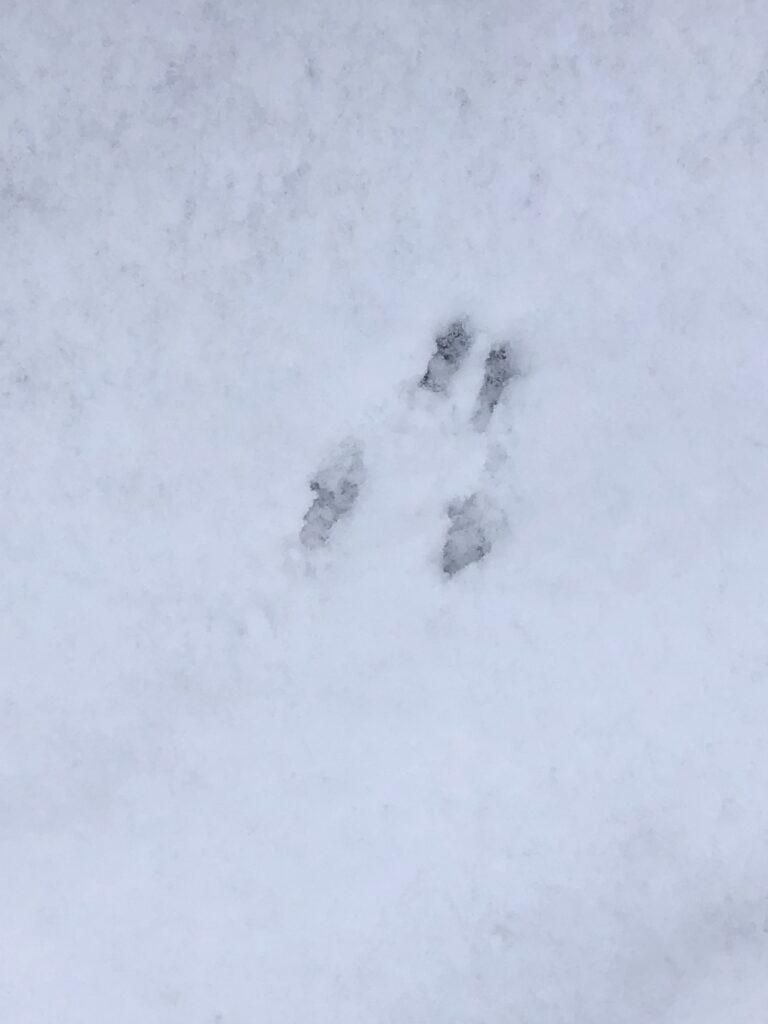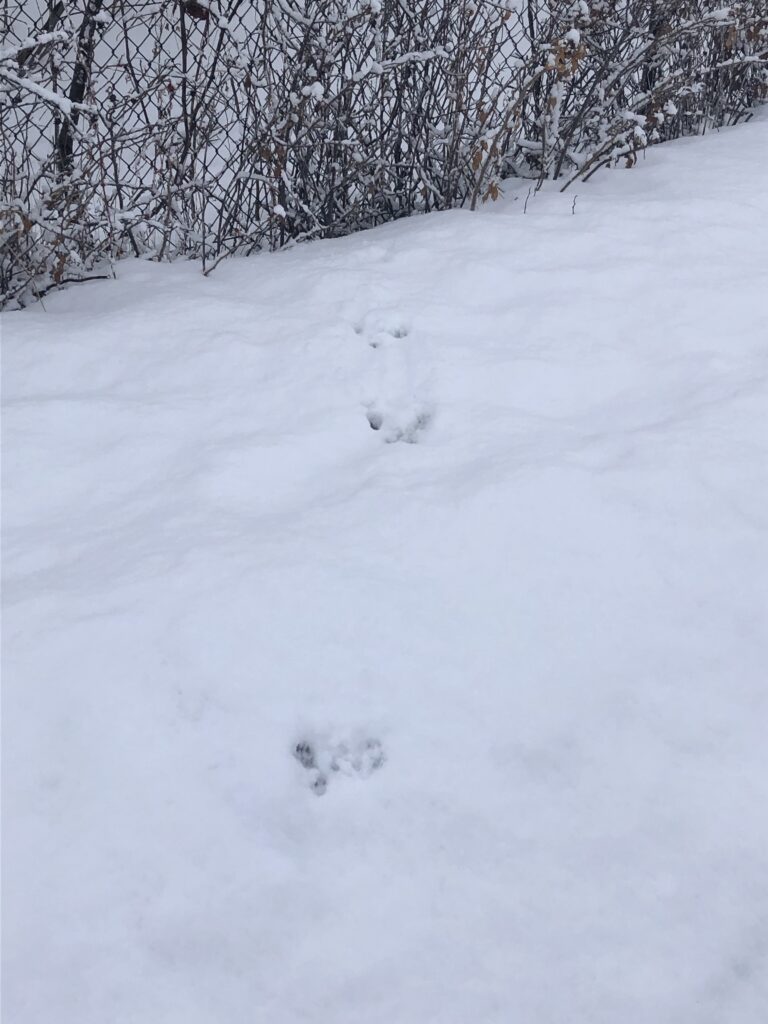A species that I focused on this month is the eastern cottontail. While walking by my phenology site just after sunset, I saw a cottontail roaming underneath some shrubs but it was too dark for a picture. The next morning I re-visited my site and found that the tracks led to staghorn sumac and paper birch. It appeared that there were a few nibbled twigs on the sumac and chew marks on the birch bark. I was able to identify its galloper tracks in the snow by measuring an 11 cm straddle and using the Mammal Tracks and Scat Guide (Levine, 2014). According to Naturally Curious, eastern cottontails don’t dig holes like other rabbits. Instead they find coverage under woody vegetation or crawl into empty burrows from other animals (Holland, 2010). During the winter months they survive by eating the bark or twigs of woody plants such as willow, birch, white oaks or sumac bushes. During the day they usually hide in vegetation, while their most active hours are at dawn or dusk when they search for food. Their most common predator in areas similar to my phenology site is the great-horned owl (Holland, 2010). With this evidence, I was able to piece together a story for the little critter. On February 27th at dusk, the temperature was around 20 degrees Farhinheit. The eastern cottontail cautiously leaves its coverage under shrubs along the fencing of the retention pond. It gallops over to the staghorn sumac and paper birch in hopes to find some twigs, buds or bark to eat. It is important for the cottontail to eat as many calories as possible to stay warm. The staghorn sumac and paper birch are very important for the cottontails survival because there are very few other options for food during the winter, especially with the deep snow of February covering the understory shrubs. Luckily for this eastern cottontail, the sumac and birch aren’t far from coverage from the cold and great-horned owl. He eats enough calories to hopefully keep him warm through the night and returns to safety.
This month was fairly similar to January’s phenology. The main difference is that the snow is much deeper. I also noticed that the black-capped chickadees are eating the staghorn sumac berries more than last month. This may be because the branches of the trees are covered in snow and it is harder for them to find bugs. Another noticeable change is that the days are getting longer and the sun is setting later everyday. It was overall a pretty cold February, however, there were one or two days that showed small glimpses of spring.
Works Cited:
Levine, Lynn. (2014). Mammal Tracks and Scat Life-Size Pocket Guide. Heartwood Press.
Holland, Mary. (2010). Naturally Curious. Trafalgar Square.




